Travelling around Spain is an incredible experience, made better by the quality of the Spanish train network, particularly Spain’s high-speed rail service. The network makes visiting multiple cities and towns across Spain a breeze, with large stations, comfortable trains and quick connection and travel times. Given the ease of train travel in Spain and the variation between Spanish cities, we wanted to travel from Madrid to Seville via train, to experience both cities and travel most comfortably and conveniently. We think this is the best way to travel between Madrid and Seville. From our experience, we’ve detailed what train options there are, how to find them, how to book train tickets in Spain and what to avoid, to help you get the most out of your trip.
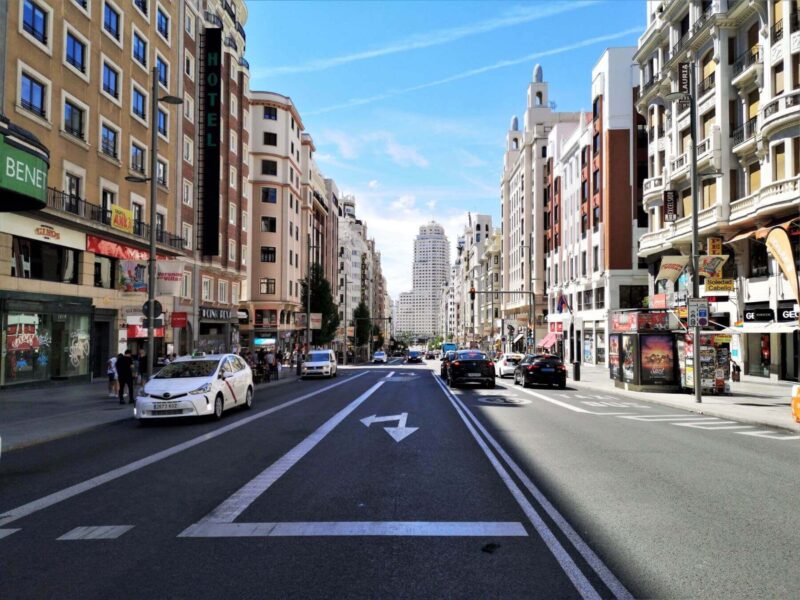

How To Book Train Tickets In Spain
Our priority was selecting the correct train to catch, both in terms of going to the right destination and getting the most convenient for departure, duration and price. There are several websites to look at, but we found Trainline Europe to be the best, as it gives users a good overview of all the trains available and a breakdown of prices. It is also incredibly easy to book the tickets on the website and see ticket conditions such as refund policies.
Trains from Madrid to Seville leave from Madrid Atocha station and go to Sevilla Santa Justa station. There are a couple of different train companies that run this route, but the quickest and most frequent is Renfe, Spain’s high-speed train company. There are around 14 direct Renfe trains from Madrid to Seville every day, giving travellers a great choice of departure times. The earliest departure for the day is generally around 07:00 and the latest around 21:00.
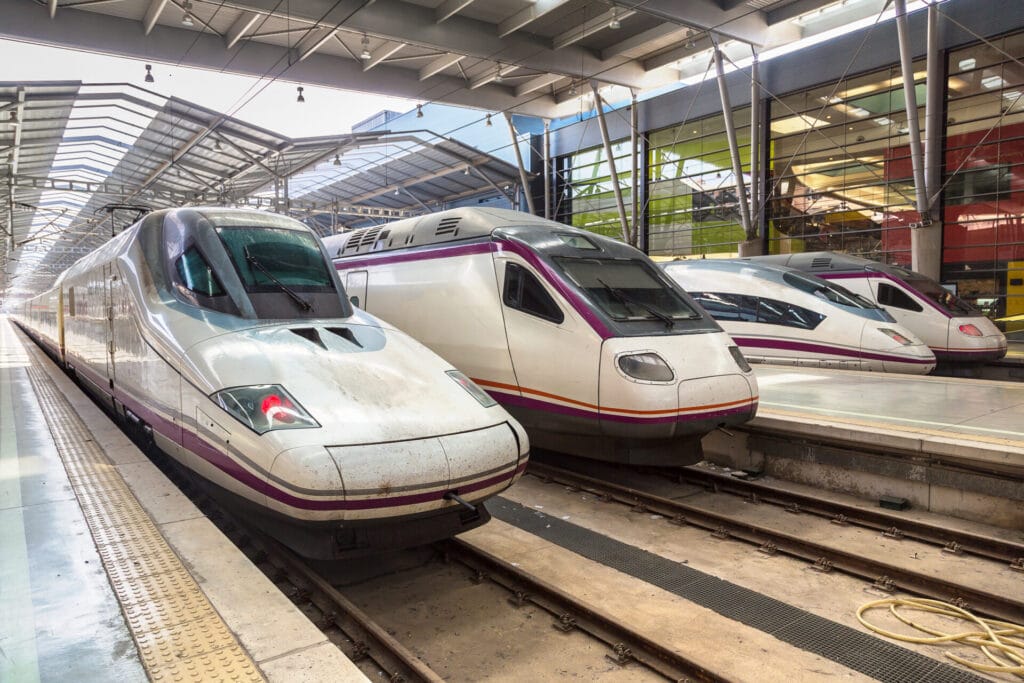
Renfe operates two types of trains on this line, the AVE and Alvia. Both are comfortable, quick and modern, but the AVE is considered slightly better out of the two. The Alvia trains reach speeds of up to 250km per hour, whereas the AVE trains can reach speeds of up to 300km per hour. However, both are great, and the journey duration between them is negligible, so pick your train depending on the most convenient departure time and price for you.
Speaking of pricing, book your train tickets in advance to get the best possible price. Tickets can range from €30 ($35) for one adult, one way in standard class to €70+ ($80+) for one adult, one way in standard class. This is one of our top tips for visiting Spain on a budget. Prices depend on how far in advance you book, the train type, time, and whether you are looking at peak or off-peak times of the year. However, tickets for first-class seats can be as little as €11 ($13) more than standard class, per adult, so it’s worth considering the upgrade for the reasonable price difference.
What To Bring Onboard The Train
Given the great facilities and amenities that are available on the trains in Spain, particularly the Renfe trains, there aren’t any unusual items you need to bring with you. We would advise printing your E-Ticket if you have one, and when possible, as this avoids any potential issues with phones dying or breaking! Otherwise, the train toilets are well equipped and there is a mobile buffet service on all trains, as well as a buffet car on all AVE trains. There are large luggage racks, and overhead luggage racks on the trains, so no need to worry about luggage limits.
Madrid Atocha Train Station
Madrid Atocha Station is reasonably big and caters to both long-distance trains (including to other European cities), as well as smaller suburban train networks. The building itself is beautiful and is yet another architectural wonder of Madrid. Inside, there is a good selection of eateries including cafes, restaurants and bars, as well as some shops. Toilets are available before ticket gates but are paid for, which is by cash only. There are also free toilets in the high-speed train area but after the ticket gates. To one side of the station, the high-speed side, there is a large hall with restaurants and shops, which also has a beautiful indoor garden with plants and trees. It’s a great place to while away some time if you have a long wait for your train.


The station is split into two sections, with the Spain high-speed rail services on one side, on the ground floor and first floor, and the suburban trains on the other side. However, despite the high-speed rail and suburban rail services being split into different areas of the station, they have the same platform numbers. This means there are 2 lots of platforms 1, 2, 3 and so on. Please make sure you are going to the correct platform number for the high-speed rail area.
We, unfortunately, did not know there were 2 of each platform and waited at the incorrect platform 8 (which was showing a departing train for Seville too!). As a result, we missed our train and had to pay again for a new ticket. We made a costly mistake so you don’t have to! If in doubt, ask a member of staff for help and directions at the station. Do this at least 20 minutes before your train departs. When we were trying to get a refund for our ticket (which we were not able to get), there was another man who had missed his train for the same reason, so it wasn’t just us!
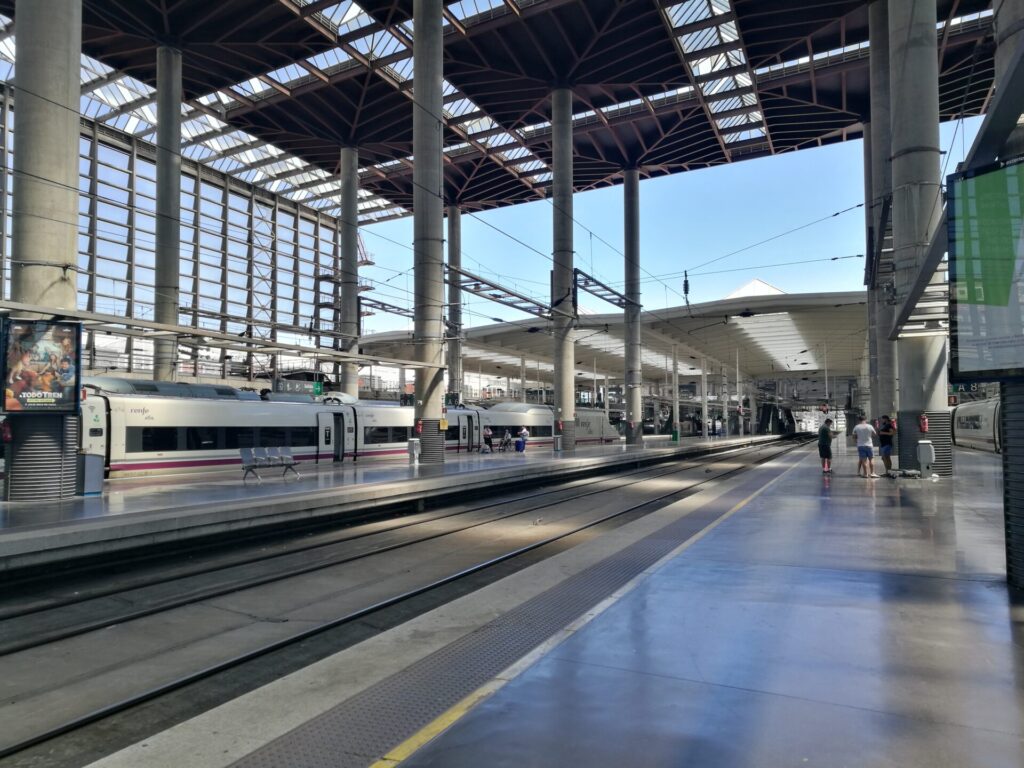
Spanish high-speed trains close for boarding around 10 minutes before departure, so make sure you arrive at the station, and your platform, in plenty of time. There is also security to go through, which includes luggage checks, similar to airport security. This can all take 10 minutes or so if there are queues, so again, leave yourself ample time. Once you have gone through security, go to your platform gate where your ticket will be checked and scanned and you will be able to board the train.
Madrid To Seville Train Experience
We found the high-speed trains in Spain very comfortable. They are light, spacious and well equipped, making any journey an enjoyable experience. Tickets should have a seat reservation on them. We sat in our allocated seats and you should too, as the trains can get quite busy. Luggage racks at the end of each car, as well as overhead racks, provide ample storage space. There are also good-sized tray tables, as well as power sockets, which makes working or using a laptop/tablet easy.
Windows throughout the train are large, so there are good views for seeing the Spanish landscape pass by. Toilets are clean, and the food and drinks service comes around frequently. The train makes several stops on the route to Seville, most notably Cordoba, a city between Madrid and Seville. We thoroughly enjoyed the train. With a smooth ride, comfortable seats and plenty of space, there isn’t anything to dislike about the experience.
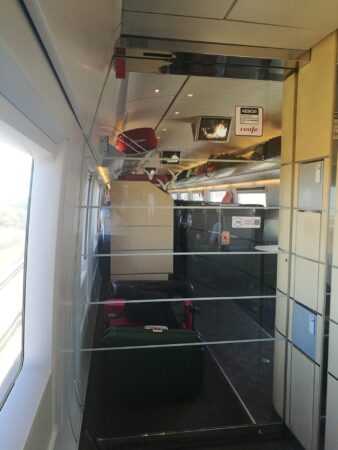
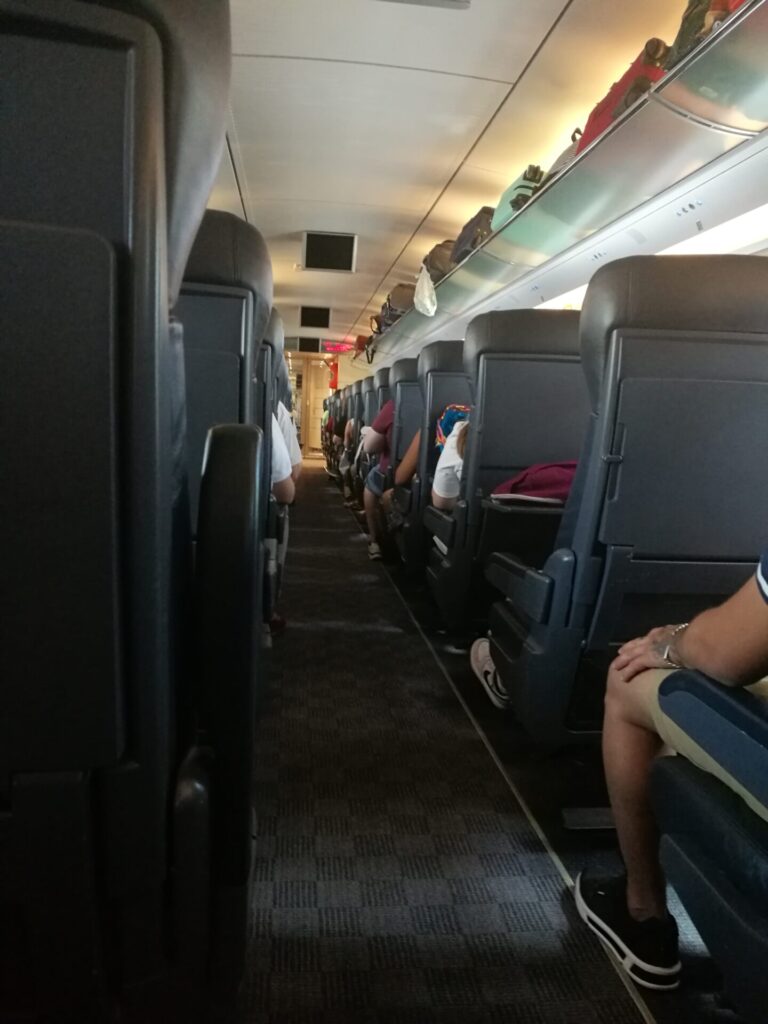
Arriving Into Sevilla Santa Justa Train Station
On arriving at Seville’s Santa Justa Station, we were greeted with a modern, yet compact station. The arrivals process is very easy. We left the platform and were immediately in the main part of the station, free to do whatever we wanted. There are a few shops and cafes in the station, mainly serving sandwiches and baguettes. Taxis and buses are available from outside the station, you can read more about the best option for getting to and from the train station to the city centre in our Seville travel guide. If you’re only visiting Seville for one day then our Seville itinerary is a good place to start for some direction on what you can cover in the city in one day.
Overall, we thoroughly enjoyed our Madrid to Seville train experience, despite making some hiccups on our journey. We would recommend taking the train over flying, or driving, as it is more comfortable, convenient and allows you to see more of the Spanish countryside. Find out about more destinations in Spain, including travel guides and articles in our collection of Spain travel guides. For tips for visiting Spain on a budget, check out our Spain on a budget article which includes tips on budget travel, budget sightseeing and how to eat Spanish food for less!
Pin this article to save it for later or share it with others





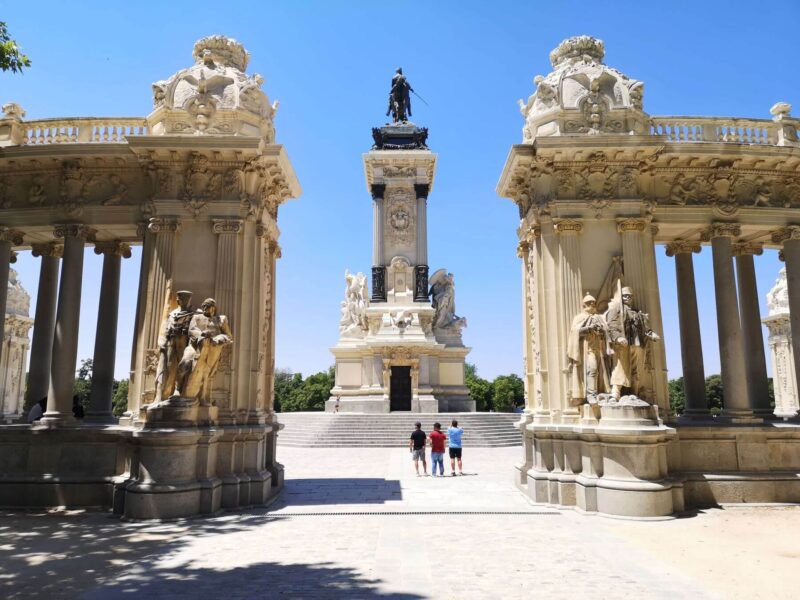

I appreciate this article so much! We are going to Seville tomorrow. Thank you for sharing!
No problem, thanks for reading and hope you enjoy your trip to Seville!